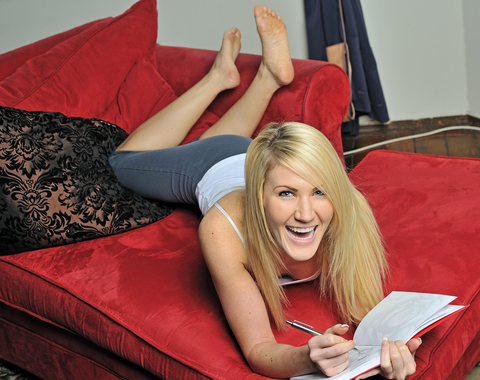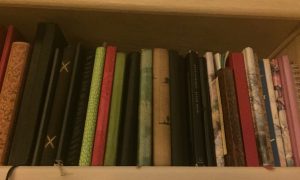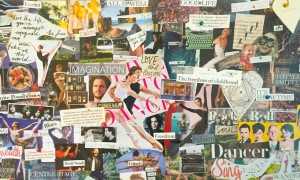By Emily Yewell Volin.
Successful dancers tend to be self-starters with strong discipline and an inquisitive mind. One tool many dancers use to hold themselves accountable to growth as an artist is the dance journal. Here are some tips for starting or refreshing your version of the self-written handbook.
What does a dance journal look like?
Sometimes the journal is provided by an instructor, however, when creating your own dance journal, find what works for you. The most important aspect of your journal is that it’s easily accessible. The journal itself can be electronic, it can even be a blog or an email you send yourself and keep in a titled folder. It can be a hard-bound book or loose-leaf sheets in a binder. Be creative and develop a system that works for you. Whatever form of journal you choose, be certain to have a process for recording ‘ah hah’ ideas that flash through your mind. Sticky notes tucked into a backpack or purse, a quick email to yourself, or an electronic note-keeping application are among good options for reminding yourself to revisit an idea or moment.
What do I put into my journal?
The short answer is anything that technically and/or artistically inspires you. Try utilizing the following categories as guidelines.
Technical Notes & Goals
- personal corrections received during class or rehearsal
- general class corrections
- new terminology
- purchase a ballet dictionary and learn to spell the terminology.
- goals for the next class or rehearsal
- strategies to accomplish your goals
- specific exercises or techniques for strengthening outside of class
Artistic Notes & Goals
- individual coaching received during class or rehearsal
- general class or ensemble coaching
- any coaching information you do not yet understand
- choreographic notes: develop a method for recording staging and sequences for quick review.
- specific questions to ask your instructor or artistic director
Inspirations & Connections
- poetry, either what you have written or experienced
- photographs, drawings, and clippings of postures, expressions, or costumes
- sensory snapshots of moments from your life
- notice the world around you. The humming and speed of a subway, chirping crickets, creaking floorboards or the shape and movement pattern of clouds can provide creative inspiration. Connect your dancing to the world you experience.
- collect and react to favorite quotes
- reactions to live or recorded dance
- your positive and negative reactions to dancing will inform your own artistic choices.
- emotional snapshots
- life experience helps develop mature performance qualities. Develop reactions to your experiences in the studio, in a movie you watched and in the world around you – the options are limitless. This information informs your ability to call upon imagery and emotion for use in your dancing.
Reflections & Goals
- develop 5 year goals for your dancing and life
- develop 6-month and/or 1-year goals for your dancing and life
- relate daily progress to these determined goals – assess if the work you are doing is moving you toward your stated goals.
- assign a color and a temperature to your dancing during a particular class or rehearsal. Reflect upon why you felt this way about the work you did and what you may repeat or do differently next time.
Your dance journal is a work in progress, just like your technical, artistic, and human development. Read your journal, add to it and reflect upon it. Take time to look at your notes from your last class or rehearsal before today’s session to help you focus your mind and know what to work on. Occasionally skim through the journal or read it cover to cover and edit your goals as need be. Go to class, rehearse, work, live, dance, reflect, and grow. Repeat.
Photo: © Aspenphoto | Dreamstime.com
















Pingback: How to Keep a Dance Journal | Dance Orlando